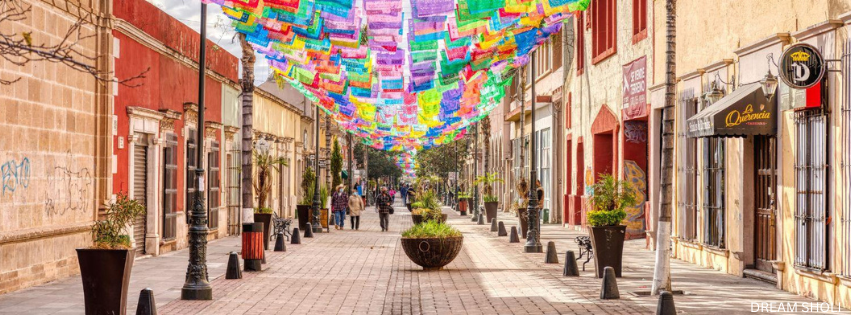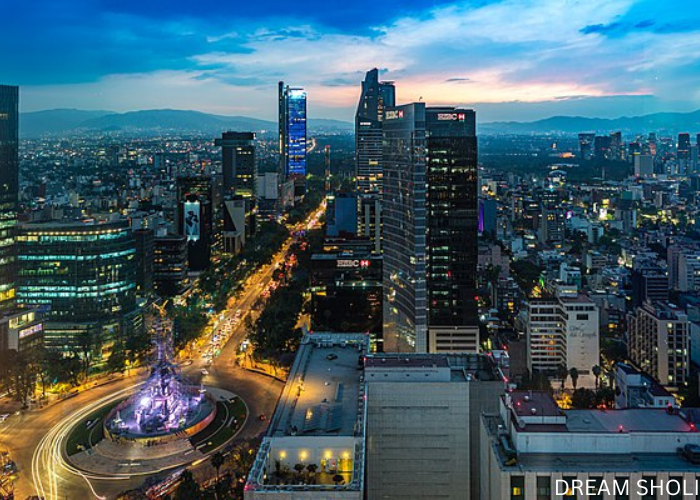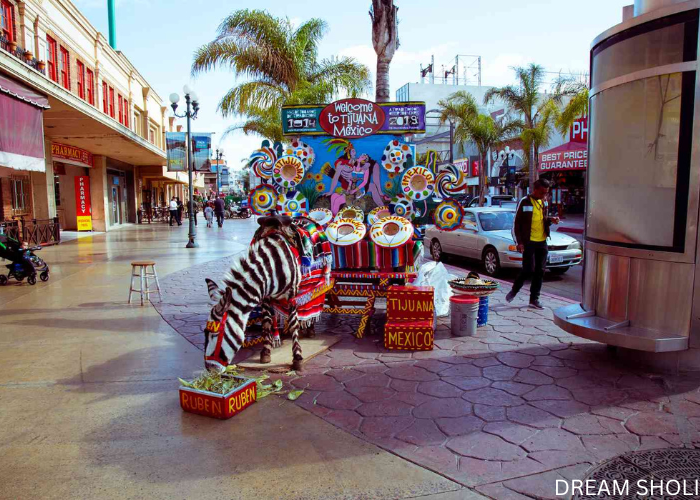
Known for its warm hospitality, Mexico invites travelers to experience its rich blend of history, nature, and modernity, making it one of the most captivating destinations in Latin America. Bordered by the United States to the north and Central America to the south, Mexico spans an impressive range of terrains, including deserts, rainforests, and beaches along the Pacific Ocean, Gulf of Mexico, and Caribbean Sea. The country is celebrated for its ancient civilizations, such as the Maya and Aztecs, whose legacies remain alive in ruins like Chichen Itza and Teotihuacan, as well as in modern Mexican culture. In the capital, Mexico City, colonial-era buildings sit alongside sleek skyscrapers, while museums such as the National Museum of Anthropology offer insights into the country’s pre-Hispanic history.
The country enjoys a range of climates, from tropical warmth along its coasts to more temperate and even cooler conditions in the mountainous regions. In general, Mexico experiences two main seasons: a dry season from November to May and a rainy season from June to October. During the dry season, the weather is typically sunny and mild, especially in the highlands, making it a popular time for visitors. The coastal areas, however, can stay warm year-round, with temperatures in the summer months often reaching 30–35°C, or higher, while winter coastal temperatures remain pleasantly warm. This temperate climate makes cities at higher altitudes comfortable to visit in any season. The southern states like Chiapas, Tabasco, and Yucatán experience a tropical climate with higher humidity, and the rainy season in these areas brings lush green landscapes but also frequent downpours. Baja California and northern Mexico, meanwhile, have more arid, desert-like conditions, especially inland, with hot summers and cooler, dry winters. The country’s diverse geography allows travelers to find favourable weather year-round, from sun-soaked beaches to the mild mountain regions.

Mexican food and culture are celebrated worldwide for their richness, colour, and depth, reflecting centuries of tradition and a unique fusion of indigenous and European influences. Mexican cuisine is famous for its bold flavors, using staples such as corn, beans, and chiles, which date back to the Aztec and Mayan civilizations. When the Spanish arrived, they introduced new ingredients, like meats, cheese, and wheat, which blended seamlessly into traditional recipes. Signature dishes such as tacos, tamales, mole, and pozole are favorites, with each region of Mexico offering its own specialties whether it’s the spicy seafood dishes of Veracruz, the moles of Oaxaca, or the barbacoa of the north.
Mexico’s cultural identity is also vibrantly expressed through its festivals, music, and art. One of the most well-known celebrations, Día de los Muertos (Day of the Dead), reflects a unique approach to honoring loved ones who have passed, using colorful altars, marigolds, and food offerings. Artisans across Mexico contribute to the country’s aesthetic diversity, producing everything from colorful pottery and textiles to renowned murals and contemporary art. Mexico’s contributions to art are notable, with figures like Frida Kahlo and Diego Rivera leaving an indelible mark on the global art scene. Mariachi music and traditional folk dances add to the lively cultural landscape, especially during local fiestas and national holidays. At the heart of Mexican culture is a deep respect for family, community, and hospitality, qualities that infuse Mexican life with warmth and a sense of togetherness. This unique cultural blend creates an inviting atmosphere where history, creativity, and tradition come together in a remarkable tapestry.
Mexico City is also a center for business, education, and politics, housing important government institutions, universities, and corporate headquarters. While the city faces challenges like air quality and traffic congestion, it remains a lively and essential part of Mexico’s identity, constantly evolving while honoring its rich past. Established on the ruins of the ancient Aztec city of Tenochtitlan, it is one of the oldest continuously inhabited cities in the Americas and today blends pre-Columbian heritage with colonial and modern influences. Mexico City boasts a vast array of historic landmarks, such as the Zócalo (the central plaza) with the impressive Metropolitan Cathedral and National Palace, as well as the ancient Templo Mayor ruins. the city is a thriving hub of the arts, home to renowned museums like the Museo Nacional de Antropología, which showcases Mexico’s indigenous heritage, and the Frida Kahlo Museum, celebrating the life and work of the iconic artist. Benito Juárez International Airport, located in Mexico City, is the busiest airport in the country and a vital international gateway for travelers. Renowned for its modern facilities and efficient operations, the airport handles millions of passengers each year, connecting Mexico City to numerous domestic and international destinations.


A city that plays a significant role in cross-border trade, tourism, and cultural exchange. As part of the largest binational metropolitan area shared with San Diego, California, Tijuana is a vibrant gateway between Mexico and the United States. Known for its eclectic atmosphere and thriving arts scene, Tijuana has become a hotspot for innovation in food, music, and design, with creative neighborhoods like Zona Centro and Playas de Tijuana showcasing local art galleries, craft breweries, and cutting-edge dining experiences. Its strategic location near the U.S. border makes Tijuana a significant hub for commerce and logistics, supporting industries such as manufacturing, healthcare, and technology. The Cross Border Xpress bridge, an enclosed pedestrian bridge linking the airport directly to the U.S., facilitates easy transit for travelers who wish to cross the border quickly and conveniently. This feature, along with General Abelardo L. Rodríguez International Airport’s connections to major cities across Mexico, the United States, and other international destinations, underscores Tijuana’s importance as a center of mobility and global access. Despite its rapid growth and urban challenges, Tijuana remains a dynamic city where the blend of cultures offers visitors a unique and memorable experience
Puerto Vallarta is a picturesque coastal city located on Mexico’s Pacific coast, nestled within the scenic Banderas Bay. Known for its stunning beaches, lush landscapes, and vibrant culture, Puerto Vallarta is a favoured destination for both international tourists and locals alike. The city’s charming blend of traditional Mexican architecture and modern amenities creates a unique atmosphere that appeals to a wide range of visitors. Puerto Vallarta’s culinary scene is equally enticing, offering a variety of dining options that highlight local flavors, including fresh seafood and traditional Mexican dishes. Additionally, the city hosts various cultural events and festivals throughout the year, celebrating its heritage and arts. Licenciado Gustavo Díaz Ordaz International Airport serves as a vital gateway for travelers visiting Puerto Vallarta and the nearby Riviera Nayarit. The airport facilitates easy access to the area’s luxurious resorts, charming boutiques, and stunning natural attractions, including lush jungles and mountainous terrains.


Explore the world effortlessly with our tailored travel packages. Let us handle the details while you create unforgettable memories.
Copyright 2024 Dream Sholi